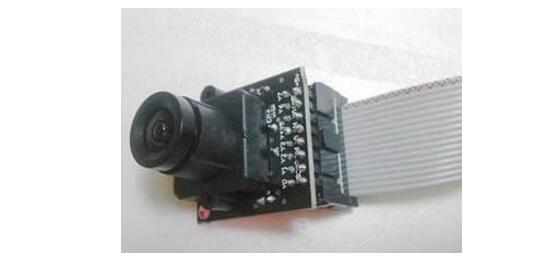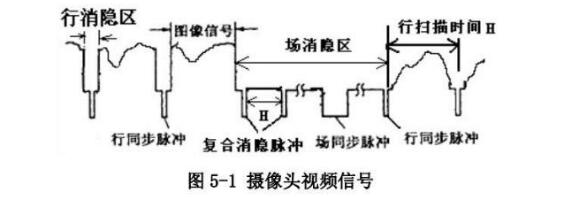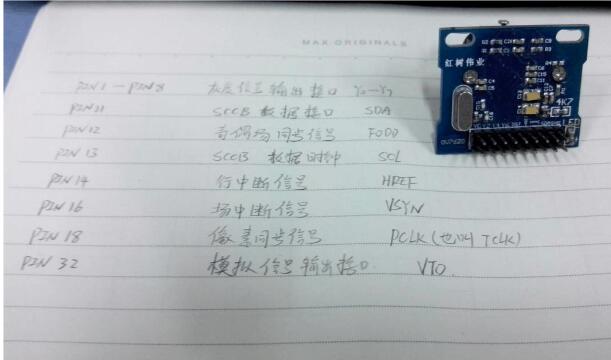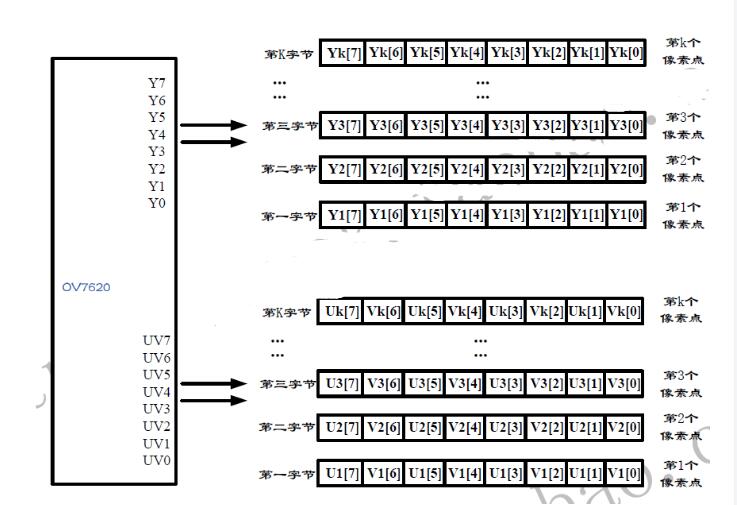**Introduction to OV7620**
The OV7620 is a CMOS camera device that serves as a color CMOS image acquisition integrated chip. It offers high performance in a compact package with a resolution of 640x480 and a frame rate of 30 frames per second. This sensor is designed for applications where space and power efficiency are important, making it ideal for embedded systems and robotics projects.
The OV7620 is a 1/3" CMOS color or black-and-white image sensor. It supports both progressive and interlaced scanning modes, along with VGA and QVGA resolutions. The maximum pixel count is 664×492, and the frame rate can reach up to 30fps. The data output formats include YUV and YCrCb, with three types of RGB configurations to meet general image acquisition system requirements.

**OV7620 Basic Parameters**
- Size: 33x27x24 (mm)
- Power Supply: DC +5V ±5%
- Scanning Method: Progressive/Interlaced
- Minimum Illumination: 2.5 lux at f1.4 (3000K)
- Signal-to-Noise Ratio: >48dB
- Maximum Pixel: (H) 664 x (V) 492; Default Effective Pixel: (H) 640 x (V) 480
- Data Output Format:
- YCrCb 16-bit / 8-bit selectable
- 60Hz 16-bit YCrCb 4:2:2 – 640x480
- 60Hz 8-bit YCrCb 4:2:2 – 640x480
- RGB Raw Data Digital Output 16-bit / 8-bit selectable
- CCIR601, CCIR656, ZV Port: support 8/16-bit video data
- SCCB Interface: Supports up to 400kBit/s
**How the Camera Works**
The OV7620 captures images using interlaced scanning. During this process, each point on the image is scanned, and the gray level is converted into a corresponding voltage value by the image sensing chip. This voltage is then transmitted through the video signal terminal.
In detail, the camera continuously scans lines of the image, producing a continuous voltage signal. The fluctuations in this signal represent changes in the gray levels of the image. After each line scan, there's a brief period where the voltage drops below the lowest video signal level (e.g., 0.3V), forming a "groove" known as a line sync pulse. This pulse marks the end of one line and the start of the next.
After scanning a full field, a field blanking area appears, containing several composite blanking pulses. One of these pulses is significantly longer and is called the field sync pulse, indicating the transition between fields. The camera scans 25 images per second, divided into two fields (odd and even), resulting in 50 fields per second.

**Camera Metrics**
Two key metrics of the camera are resolution and effective pixels. Resolution refers to the number of line sync pulses per field, which determines how many rows are scanned. Effective pixels are typically expressed as a multiplication (e.g., 320x240), where the first number represents the horizontal resolution, and the second the vertical.

The OV7620 has a register address range from 0x00 to 0x7C, many of which are reserved. By configuring these registers, the camera can operate in different modes. For example, to set it to continuous scan mode with 16-bit RGB raw data output, you need to write specific values to the appropriate registers using the I2C-like SCCB protocol.
**SCCB Protocol**
The OV7620 uses the SCCB (Serial Camera Control Bus) protocol, which is a simplified version of I2C. SIO-1 is the serial clock input, and SIO-O is the bidirectional data line, equivalent to SCL and SDA in I2C. The timing of SCCB is similar to I2C, but it lacks support for multi-byte read/write operations, requiring the NA bit to be high.
**Use of OV7620**
Although many modern cameras offer better performance than the OV7620, it remains a popular choice for learning and basic applications. Here’s a breakdown of its features and performance.
**1. What is YUV422?**
The human eye is more sensitive to brightness than to color. Therefore, RGB signals are often converted to YUV, where Y represents luminance and UV represents chrominance. YUV422 is a compressed format that reduces bandwidth while maintaining visual quality. For the OV7620, it outputs Y[7..0] and UV[7..0], with Y representing grayscale and UV representing color.

**2. Advantages of OV7620**
- **Voltage Compatibility**: The OV7620 supports both 3.3V and 5V, making it compatible with various microcontrollers.
- **Frame Rate**: It operates at 60 fps, which is suitable for most real-time applications.
- **Resolution**: The resolution is ideal for track detection, with options to adjust the output format via SCCB.
**Timing Analysis**
Understanding the timing of VSYNC, HREF, and PCLK is crucial for working with the OV7620. These signals determine when the camera starts and ends each line and field.
- **VSYNC Period**: 16.64ms, with a high time of ~80us.
- **HREF Period**: 63.6us, with a high time of ~47us.
- **PCLK Period**: 73ns, with a high level representing valid pixel data.
**Code Example**
Here’s an example of initializing the OV7620 and handling interrupts:
```c
void OV7620_Init() {
// Initialize PCLK, HREF, VSYNC, and DMA
}
void PORTB_IRQHandler(void) {
// Handle field interrupt
}
void PORTA_IRQHandler(void) {
// Handle line interrupt
}
```
**SCCB Library**
The SCCB library provides functions for initializing the interface and sending data to the OV7620. Below is an example of how to use it:
```c
void sccb_init();
void sccb_regWrite(u8 device, u8 address, u8 data);
```
**Example Usage**
```c
sccb_init();
sccb_regWrite(0x42, 0x11, 0x01); // Set resolution
sccb_regWrite(0x42, 0x14, 0x24); // Set QVGA mode
```
This concludes the overview of the OV7620 camera. With proper configuration and understanding of its timing and protocols, it can be effectively used in various applications.
Explore premium Schuko Power Strips designed for seamless use across Germany and continental Europe. Featuring Type F sockets (CEE 7/4), these multi-outlet extension cords deliver safe, grounded power to EU-compatible devices like appliances, computers, and chargers. Ideal for European travel, offices, and homes in regions requiring Schuko compliance (e.g., Austria, Netherlands, Spain). Our strips include surge protection, fire-resistant casings, and child safety shutters meeting TUV CE/RoHS/REACH certifications. Choose from compact 3-socket to heavy-duty 8-port designs with 1.5m–5m cables.
Schuko Power Strip,European Schuko Power Strip,YG Schuko Power Strip
Yang Guang Auli Electronic Appliances Co., Ltd. , https://www.ygpowerstrips.com